Sri Shyama Krishnamruta’- A musical tribute to the legendary composer of Karnatak Classical Music ‘Sri Shyama Shastri’ was a joint venture conducted by Sri Krishna Gana Sabha and Surabhi Gana Kalamandira Charitable Trust, Mysuru, on May 5.
Vid. Dr. C. A. Sridhar, scholar and legendary flautist, was the chief guest along with B.S. Sridhar Raje Urs, President of Krishna Gana Sabha and Dr. Sukanya Prabhakar, President of Surabhi Gana Kalamandira.
Among the Trinity of Karnatak Music, Shyama Shastri was the eldest in age. He was born on 26th of April 1762 in Thiruvarur and was given the birth name as Venkata Subramanya. He hailed from a family of Priests and worshipers of Goddess Kamakshi of Kanchi. Shyama Shastri’s family moved on to settle in Thanjavur. He was well-versed in the fields of Music, Astrology, Vedas and other traditional subjects.

A chance encounter with Sanyasi Sangeetha Swami, a mendicant and musical exponent from Kashi who was passing through Thanjavur, breathed new life into Shyama Shastri’s music education and he also learnt music from his maternal uncle and Adiappayya. He started to compose musical compositions from Geethams to complex Krithis in a very young age with the musical mudra / pen name ‘Shyama Krishna’.
Shyama Shastri was not into worldly pursuits and had no interest in being a court musician. He has contributed around 300 beautiful compositions to the field of Karnatak music. Among these compositions, he has composed Navarathna Malika (set of of nine compositions) praising the goddess Madurai Meenakshi. He would go on pilgrimage tour and compose swarajathi, varnams and mainly krithis on deities of the temples such as Thiruvaiyaru Dharma Samvardhini, Nagapattinam Neelayathakshi, Thiruvanaikaval Akhilandeswari etc. In his compositions, Shyama Shastri adopted common as well as rare ragas and has composed in three different languages, Tamil, Telugu and Sanskrit. He preferred Telugu as his medium of expression. He is the only one among the Trinity to have composed in Tamil. He has composed masterpieces in ragas, like Ananda Bhairavi and Saveri.

This unique musical feature was directed by Dr. Vidushi Sukanya Prabhakar. Four geethams in ragas like Bhairavi, Saveri, Pharaz and Madyamavati gave a beautiful opening to the programme. These Geethams are very unique, consisting of thristhayi sancharas, swaraksharas and sancharas representing Bhava or essence of that raga.
Beautiful word phrases like Kamakshi Karunakatakshi, Kamakoti Peetagathe and Kaamitha phala Daayike were observed in these geethams. In his compositions, we can observe his sharanagathi and prayers to obtain the anugraha of Goddess Kamakshi. These Geethams were melodiously presented by Anjana, Nisarga, Atri Kaushik, Anagha, Niramaya and Sharanya, the budding artistes of Surabhi.

Followed by the Geethams, three Kamakshi Swarajathis were beautifully presented in the form of Goshti Gayana by students of Surabhi along with Guru Sukanya Prabhakar. These swarajathis are indeed 3 wonderful gems of Karnatak music set in Ragas Yadukula kamboji, Thodi and Bhairavi and tala-vilamba aadi and Mishra chapu. Vid. Akshatha and Meenakshi presented two beautiful yet intricate varnas of Shyama Shastri upholding their mastery over those ragas and complex sancharas. These varnas were set in ragas Begade and Saurashtra. Gana maala or a musical garland of 5 rare krithis set in complicated ragas Mukhari, Kalgada, Bhairavi, Reethigowla and Anandabhairavi was soulfully offered to the lotus feet of Goddess Kamakshi by 5 upcoming musicians — Manya Manjunath, R. Nityashree, Prerana Praveen, Vidu. Meera Manjunath and B. V. Pramukh. All these compositions were accompanied by Vid. Prithvi Bhaskar on violin and Vid. P. S. Sridhar on mridanga.
At the end of the recital, Dr. Sridhar spoke about the life and compositions of Shyama Shastri and also regarding the performance of Surabhi students.
— Meera Manjunath



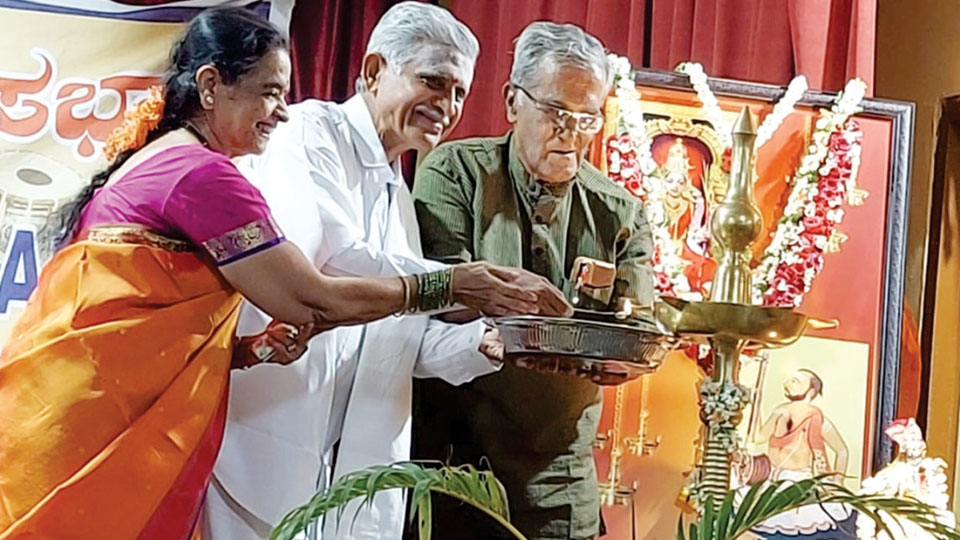
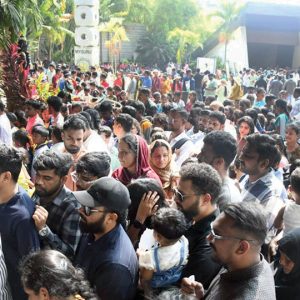
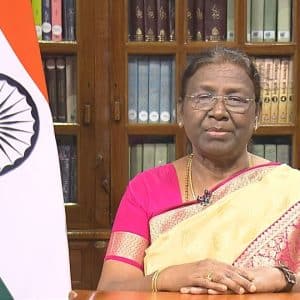
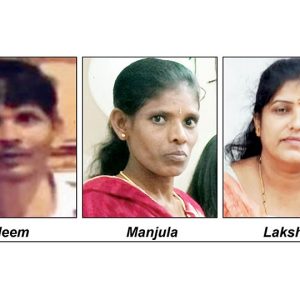
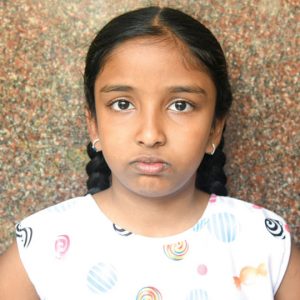
Recent Comments